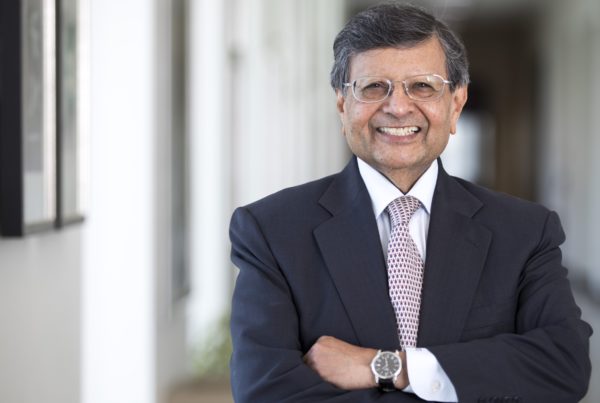Published: Mar 08, 2006 in Knowledge@Emory
In August 2002, when Nenette Day flew from the United States to New Delhi, she wasn’t on vacation. Instead, the Boston, Massachusetts agent of the Federal Bureau of Investigation’s Cybercrime Unit was part of an elaborate cross-border sting operation designed to snare Shekhar Verma, an Indian national who was trying to sell off proprietary computer source code to the highest bidder. Verma had worked for a Bombay outsourcing company that had developed the code, worth an estimated $70 million or more, for an American company.
American companies are achieving cost savings when they outsource core business processes, or use temporary or other contract help, say faculty from Emory University’s Goizueta Business School and other experts, but these activities are also muddying the very definition of “employer”—loosening the bonds between workers and the corporation and placing their intellectual capital at risk.
Outsourcing Offers Savings, But at a Price
“When non-traditional employees are utilized in core business operations, there are frequently some corporate concerns about establishing protections for intellectual property (IP),” notes Jagdish Sheth, a professor of marketing and corporate strategist at Emory University’s Goizueta Business School. “In particular with the increase in IP development, laws and other protective regulations are beginning to catch up with technology.”
When Shekhar Verma was arrested in New Delhi, for example, he was initially charged under civil statutes, since at that time India did not have any criminal codes addressing intellectual property.
But if there are concerns about a lack of employee loyalty and the subsequent threat it poses to safeguarding proprietary knowledge, corporate executives shouldn’t downplay their own role in bringing it about, says Bradd Shore, professor of anthropology at Emory and director of the Center for Myth and Ritual in American Life (MARIAL). In previous interviews he has noted that as the concept of a lifetime employer recedes from the landscape, the concept of loyalty also shrinks.
“You tend to find that employers aren’t encouraging lifetime loyalty to companies,” he says, qualifying his comments by noting that his research interests focus on families and family life. “Rapid expansion and contraction cycles have prompted companies to reduce costs—and distance themselves from the workforce—by taking such steps as contracting out labor and offering individually controlled benefits, like 401(k) retirement plans in place of company-guided defined benefit and other plans.”
What Drives Companies to Distance Themselves from Employees?
Of course the employers aren’t taking these actions in a vacuum. Sheth, for example, has pointed out that in the U.S., benefits account for a significant share of firms’ labor costs, which helps to explain the sense of urgency that drives the use of contract and other kinds of workers by many American companies.
“In many other nations, government picks up the cost for health care expenses and pensions,” he notes. In contrast, in the U.S., companies pay for most of the cost. “On a global basis, the U.S. model is not competitive. In particular, many companies can’t afford to carry the future obligations of retirement benefits. The increase in life expectancy has only aggravated the situation.”
Such so-called legacy pension and other benefits were cited by manufacturers like U.S. Steel, and US Airways, United Airlines and other carriers when they declared bankruptcy in prior years.
And according to the Wall Street Journal, Alcoa Inc. has advised that beginning in March new salaried employees will not be eligible to participate in its U.S. defined-benefit pension plan. Other companies that have taken similar steps include Aon Corporation and NCR Corporation. Additionally, reports the WSJ, International Business Machines Corporation and Verizon Communications Inc. have “frozen” the pension plans of current salaried workers. Under this approach, after a certain date participants already enrolled in the pension plan will no longer be credited with any increases.
But even as more companies seek efficiencies by cutting benefits or by outsourcing—according to the Alexandria, Virginia-based trade group American Staffing Association,U.S. staffing firms employed an average of 2.8 million temporary and contract workers per day for the three months ended September 30, 2005; up 7.1% or more than 186,000 workers compared with the same period in 2004—some Goizueta faculty and alumni are questioning the validity of such actions.
Are Disconnected Workers Less Productive?
Jill Perry-Smith has engaged in research that points to a possible correlation between work-life balance and the vitality of a firm. An assistant professor of organization and management at Goizueta, Perry-Smith co-authored a paper, with Terry Blum, dean and professor at Georgia Tech’s College of Management, titled “Work-Family Human Resource Bundles and Perceived Organizational Performance.” In it they explored the link between complementary or highly related sets of human resource initiatives, including work-family policies, and organizational outcomes.
The authors’ work, which used data from a variety of sources and explored 527 U.S. firms, suggests that companies with more extensive work-family policies enjoy a greater level of fiscal performance.
“In a work context with these discretionary employee-centered values, employees are likely to respond favorably,” the authors wrote. “They will reciprocate by contributing extra effort, by developing a concern for the overall success of the organization, and by embracing its goals.”
Perry-Smith adds that “one could infer that employees who are more committed to a company will work harder to meet the business’ goals and objectives.”
That’s what drives Joe Schab, a Goizueta MBA alum and president of Creative Digital Group in Atlanta, Georgia to build good ties with his workers.
“We’re in a competitive industry where a lot of companies are looking for talent,” says Schab, who helms the interactive marketing company. “We work hard but we also let our employees know they’re valued by adding creativity to meetings, holding periodic offsite meetings and by encouraging employees to get involved with their family and community by being open to letting them work remotely when possible. We try to work with them as long as the high quality of the work is maintained, and it gets done in a timely manner.”
He says the payoff for the 30-person firm, which posted $5 million in revenue last year, is a collaborative, imaginative workforce with extremely low turnover.
Xerox Corporation is another example of companies that reach out to their employees by offering a balance between work and outside interests. This year, eight Xerox employees are taking fully paid sabbaticals while taking on full-time community service projects.
They’re applying technical, business and personal skills in such roles as advocates for abused children, offering support for military families, and improving emergency response systems.
The leaves of absence are part of The Xerox Foundation’s Social Service Leave initiative, which has granted sabbaticals of up to one year to 469 employees since the program began in 1971. The company estimates that cumulatively, it has donated about a half-million volunteer hours since the program’s inception.
The Market Delivers a Judgment
Anecdotal evidence indicates that there aren’t very many firms engaging in these and other kinds of loyalty building activities, says Eileen Apple. She shares a job with Danielle Rubenstein running Goizueta’s Alumni Career Services Department.
“A tighter job market and a slow economy are helping to drive companies away from sponsoring employees for professional development and other activity that’s not seen as office-centric,” she observes. “Because of issues like this, employees don’t develop much loyalty to their firms, and we’re seeing a lot of people change companies after just a few short years of employment.”
Each time that happens, a company may lose momentum, since the former worker takes some knowledge with him or her, and the company needs to invest time and other resources in training the new employee.
Richard Metters, a professor of decision and information analysis at Goizueta, says that as more people routinely spend their working years being employed by multiple companies, they’re likely to experience a kind of short-term disorientation as they acclimate to new surroundings every few years or more frequently.
“This learning curve, coupled with a lack of identification to any single employer, could be a drag on the economy,” he observes. “Further, a lack of institutional identification has profound, but difficult-to-measure consequences. Retaining employees means paying them top dollar, but without a bond to the company, people feel more like free agents that go to the highest bidder. Employees who identify with their company are willing to work for less.”
Less obvious, says Metters, are the tasks that “don’t show up in the boxscore.
“Similar to a showboating athlete only concerned about scoring average, and not concerned about diving for loose balls, employees who do not identify with their employer could be far more concerned about living up to the letter of their contract than helping out,” he observes. “Consider a typical scenario: An important customer wants a job done in a special way that will cause you to hurt your own personal performance targets. Why go out of your way and be flexible to someone else’s needs if you’re a free agent?”
Adds Apple, “Sooner or later, the word gets out about companies that don’t promote employee loyalty. In the long run, they may find it’s tougher to attract top talent.”




